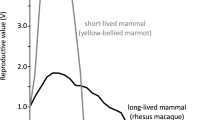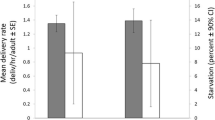Abstract.
Using kin selection theory and Hamilton's equation (B/C > 1/r) to determine how group-living individuals should allocate altruism among their various categories of kin has proven extremely difficult. Among the factors responsible are: (1) the unclear altruistic status of many behavioral categories, (2) the difficulty of assessing the values of B and C, and hence their impact on the distribution of altruism according to relatedness, (3) the potentially confounding effect of reciprocal altruism on kin selection, and (4) the various time constraints limiting the ability of individuals to favor distant kin. We report experiments on Japanese macaques (Macaca fuscata) which made it possible to assess or control the effect of these factors on the distribution of altruism in relation to degree of kinship. We concentrated on a clearly altruistic behavioral category with a particularly large B/C ratio to maximize the distribution of altruism according to relatedness. The behavior was unilaterally distributed between kin, hence minimizing the confounding effect of reciprocal altruism on its distribution. Time constraints were eliminated by giving potential donors equal opportunities to behave altruistically with every kin tested. In each experiment, an adult female was given an opportunity to help at low cost one of her juvenile kin outrank its dominant peers. In previous experiments of this sort carried out on juveniles females, we had tested the impact of four categories of adult female kin. In the present experiments carried out on juvenile males, we tested new categories of adult female kin and increased our sample of kin dyads considerably. Altruism toward young males extended to r=0.125 among direct kin (great-grandmother/great-grandson dyads), and to r=0.25 among collateral kin (siblings), or inconsistently to r=0.125 (aunt-nephew dyads). These relatedness limits of nepotism may reflect the limit of the profitability of altruism as defined by the terms of Hamilton's equation and/or the limit of kin discrimination in our group.
Similar content being viewed by others
Author information
Authors and Affiliations
Additional information
Electronic Publication
Rights and permissions
About this article
Cite this article
Chapais, B., Savard, L. & Gauthier, C. Kin selection and the distribution of altruism in relation to degree of kinship in Japanese macaques (Macaca fuscata). Behav Ecol Sociobiol 49, 493–502 (2001). https://doi.org/10.1007/s002650100335
Received:
Revised:
Accepted:
Issue Date:
DOI: https://doi.org/10.1007/s002650100335




